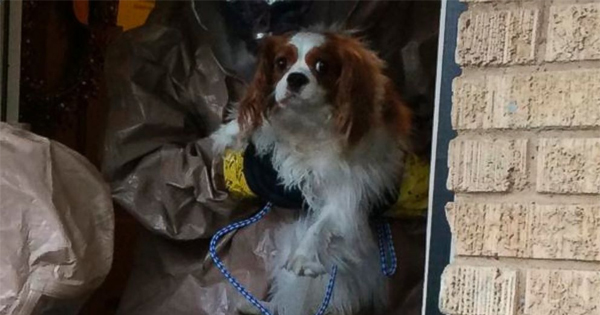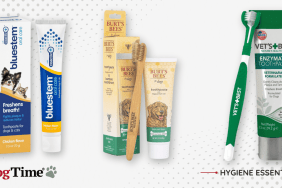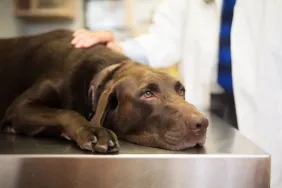DogTime recently reported on officials in Spain euthanizing a dog for being exposed to Ebola. This week in the U.S., a dog living with a Texas nurse who became infected with Ebola was placed in quarantine.
The nurse, Nina Pham, 26, was identified as the first person to contract the Ebola virus in the U.S. Pham, who was caring for Thomas Eric Duncan, the Liberian Ebola victim who died of the disease, got infected through what’s been called a breach in protocol at her hospital while she cared for Duncan.
A few days after Duncan’s death, Pham was at home with a fever. She realized she had Ebola symptoms and checked in as a patient at the hospital where she works. Hazmat workers went into Pham’s home and removed her Cavalier King Charles Spaniel, Bentley. The dog is in quarantine at a decommissioned naval air base.
“When it comes to Ebola and how this infectious disease interacts with our pets, there really isn’t a ton of information available,” says Dr. Jennifer Welser, chief medical officer of BluePearl Veterinary Partners, an organization that offers specialty and emergency services in 14 U.S. states. “However, we’ve done our best to put together a list of the important things we do currently know.”
The following is from a press release issued by BluePearl:
- Diseases that can pass between humans and animals are referred to as zoonotic diseases. This is important because 62 percent of American households have at least one pet according to a 2012 Humane Society survey. Because of this, veterinarians play a vital role in recognizing and preventing the spread of disease.
- Ebola is zoonotic, but the extent to which it actually affects animals is not well known. According to the Centers for Disease Control and Prevention, scientists believe the first patient became infected through contact with an infected animal, such as a fruit bat or primate (apes and monkeys), which is called a spillover event. Person-to-person transmission follows and can lead to large numbers of affected persons. In the current West African epidemic, animals have not been found to be a factor in ongoing Ebola transmission.
- There have been no reports of dogs or cats becoming sick with Ebola, even though they may develop antibodies from exposure to the disease. Certainly a greater understanding of the effects of Ebola on dogs and cats is needed.
- According to the CDC, the risk of an Ebola outbreak affecting multiple people in the United States is very low. Therefore, the risk to pets is also very low. Even in areas in Africa where Ebola is present, there have been no reports of dogs and cats becoming sick with Ebola.
- Beyond the more common household pets, some people do keep monkeys as pets. According to the CDC, monkeys are at risk for Ebola. Symptoms of Ebola infection in monkeys include fever, decreased appetite, and sudden death. Monkeys should not be allowed to have contact with anyone who may have Ebola. Healthy monkeys already living in the United States and without exposure to a person infected with Ebola are not at risk for spreading Ebola.
- If there is a pet in the home of an Ebola patient, the CDC recommends that veterinarians, in collaboration with public health officials, evaluate the pet’s risk of exposure. Appropriate measures, such as closely monitoring the exposed pet while taking necessary precautions, should be put in place.
Veterinarians and scientists with the CDC, U.S. Department of Agriculture, the American Veterinary Medical Association, and other organizations continue to work together to develop additional guidance for the U.S. pet population.
“Besides being doctors to animals, veterinarians play a key role in public health and disease prevention,” Welser says. “Veterinarians throughout the U.S. and around the world work together with human health officials to keep the public safe.”
Sources: BluePearl Veterinary Partners, New York Post, CBS News, American Veterinary Medical Association, Centers for Disease Control and Prevention









